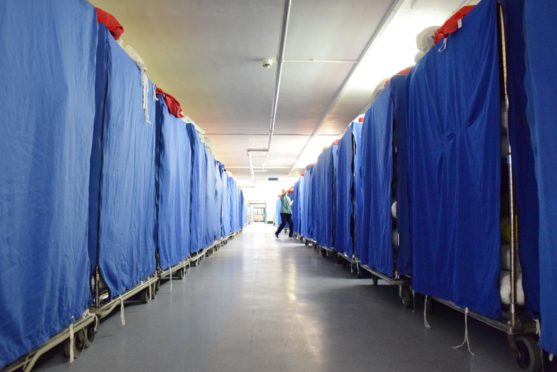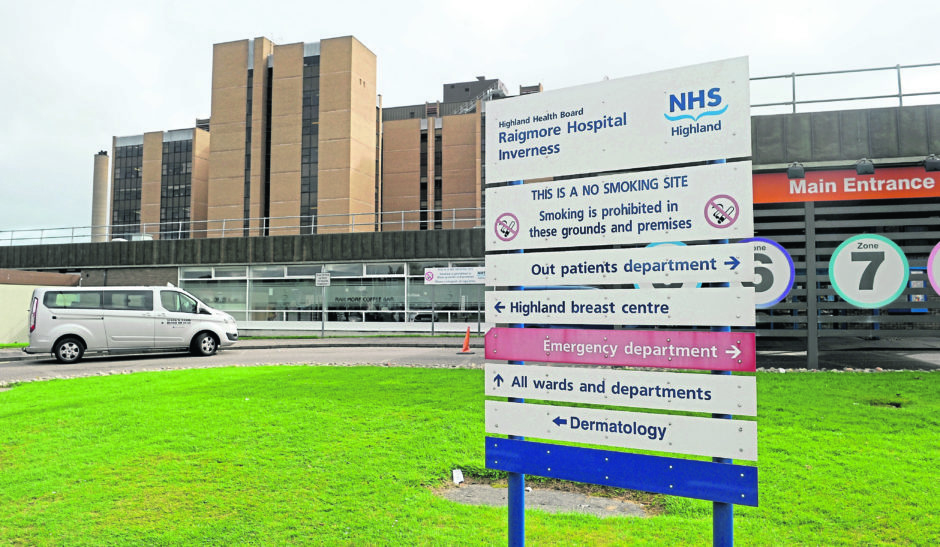Plans to axe half the hospital laundries in Scotland could progress within weeks despite warnings it is a “recipe for disaster”.
Health board chief executives are poised to receive a business case for the overhaul, which could reduce the number of laundry facilities from eight to four.
The Press and Journal previously revealed that NHS bosses were considering centralising a service which employs more than 500 staff across Scotland.
A business case was thought to be going before local health chiefs in November but newly-released documents show the blueprint was delayed, and is now due to be sent out “by April”.
It is just not feasible, given the cost and the weather. It is just a recipe for disaster.”
According to internal memos, the plan is “designed to inform the provision of a future laundry service for NHS Scotland that is efficient is efficient, effective and sustainable.”
The eight laundries under review are located at Aberdeen Royal Infirmary, Raigmore Hospital in Inverness, Borders General Hospital, Ninewells Hospital in Dundee, St John’s Hospital in Livingston, Victoria Hospital in Kirkcaldy, the West of Scotland Laundry in Wishaw and Hillington Laundry in Glasgow.
A series of documents disclosed to us under freedom of information laws show that there are “six different combinations of the four laundries which are viable”, and another option which would involve keeping open four of the laundries, plus a fifth at Borders General Hospital, because it generates commercial income.
The NHS has been studying building conditions and transportation costs ahead of making any final decisions.
A draft “equality impact assessment” – which assesses the consequences of a policy against aims at promoting equality and good relations with staff – was presented to the Laundries Programme Board in April last year, but “due to the potential negative impacts that have been identified”, a short-life working group was formed to develop a mitigation plan.
One recent internal update newsletter stated: “The trade unions have always taken the view that they will contribute, but never endorse any decisions which chooses one laundry over another.
“The trade unions’ clear preference is for the eight laundries across Scotland to remain and for work to be done with each laundry to make them as efficient as possible.”
The memos, all from 2019, also outline how some services would remain at the sites which were closed.
“If the eight mainland laundries are rationalised to four, then the four laundries that are decommissioned will still require launderettes to process the small ‘return to sender’ items such as mops, maternity belts, hoist straps etc,” one stated.
“The existing laundry buildings will also remain the storage point for linen and the transport hub from which linen is distributed.”
Another memo added: “With regard to a proposed governance and management structure for laundries, it has been clarified at the programme board, that if the laundries were to be rationalised, it may make sense to operate the combined laundries as one business unit.
“Therefore, this will be one of the models which will be developed within the business case for consideration.”
NHS bosses believe the shake-up will save up to £2.7 million a year, which is around 12% of laundry operating costs.
The move is part of a “shared services” drive, which aims to save money and streamline services, but has also led to fears in recent years that local health boards could be scrapped and amalgamated into a handful of new “super boards”.
They are talking about closing laundries that are productive, which makes no sense.”
Unison organiser Willie Duffy, the trade union’s head of health in Scotland, said: “The date for the business case keeps changing.
“In October last year they were talking about it going to chief executives in November, but that never happened.
“We’ve made our positions very clear from the unions, from Unison, that we will oppose any attempt to close any of the laundries.
“In particular, they are talking about closing laundries that are productive, which makes no sense.
“We don’t believe either that they have taken into account the carbon footprint.”
Mr Duffy added: “Take how bad the weather has been in the last couple of weeks here. If they close some of these laundries, they’re going to have to take some of the linen and laundry from the centre up to the Highlands and other areas, which is just not feasible, given the cost and the weather. It is just a recipe for disaster.
“We have a no redundancy policy in NHS Scotland, so they can’t make staff redundant. However, there is then issues about what do they do with the staff if they want to close a laundry?
“Now, they will attempt to redeploy them, but where they redeploy them to, I don’t know, because people who work in the laundry have particular skills and tasks.
“So, if they were going to redeploy them they would need to have discussions with us about how they are going to redeploy staff.
Staff would obviously be concerned if the laundry closes.”
“We’ve updated staff, in terms of the position, and staff would obviously be concerned if the laundry closes, but I think they’re comfortable with the position we’re taking as a union, that we will oppose the closures.”
A spokesman for NHS National Services Scotland said: “The National Laundry Programme Board is conducting a thorough analysis of laundry production unit functions.
“The plan is to ensure the provision of a future laundry service for NHS Scotland that is efficient, effective and sustainable.”



